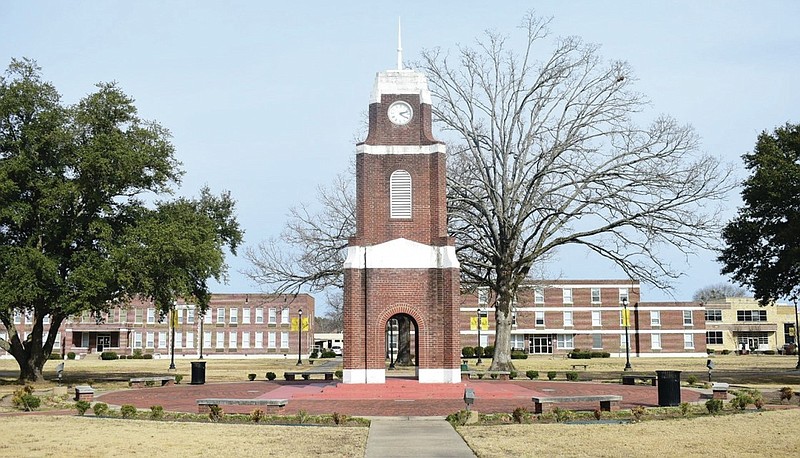A quantum materials research effort highlighted in a White House announcement last week will expand to include the University of Arkansas at Pine Bluff.
Federal officials last Tuesday announced a workforce development strategy to go along with an already underway push to develop quantum materials and devices, considered to be a new generation of computing and communications technology.
Part of the research effort has included a $20 million National Science Foundation grant announced last year to establish what's known as the MonArk NSF Quantum Foundry at the University of Arkansas, Fayetteville and Montana State University. Researchers are working to more efficiently produce materials formed by bonding a single layer of atoms.
Last week the White House noted a new $2.2 million National Science Foundation grant to expand the MonArk project.
UA-Pine Bluff, a historically Black university, and the South Dakota School of Mines and Technology are now part of what's known as the Arkansas-Montana-South Dakota 2D Quantum Photonics Alliance.
In physics, photonics involves harnessing the properties of light, particularly in ways that allow for information to be transmitted. A photon is often described as an elementary particle, meaning that it cannot be broken down into smaller components.
Tomasz Durakiewicz, a project manager for the National Science Foundation, in a statement said UA-Pine Bluff "will primarily assume responsibility for developing efficient and fast devices suitable for transmitting and processing quantum information using light."
Sanjay Behura, a UAPB assistant professor of physics and mathematics, said that a post-doctoral researcher, about six undergraduate students and one graduate student will take part in the campus research effort he's leading over the next four years.
The project "will significantly expand quantum career-path opportunities for UAPB graduate and undergraduate students," Behura said in a statement.
The National Science and Technology Council report released last week on the quantum information science and technology workforce states that the "workforce landscape is difficult to assess due to the complex and interdisciplinary nature of the work."
The report nevertheless stated that, based on available information, "there appears to be a talent shortage at all levels."
Hugh Churchill, an associate professor of physics at UA-Fayetteville and an associate director on the MonArk project, has described quantum mechanics as the branch of physics that helps explain the workings of the physical world when objects are very small, temperatures are very cold or the time scale under study is very short.
Harnessing this science has led to work on technologies like quantum computers, which hold promise as a way to tackle problems that have proven difficult for current computing technology, Churchill has said.
"Within MonArk we are developing the capability to rapidly create and test two-dimensional material quantum devices," Churchill said in an email last week.
With the expansion of the project, "the idea here is to apply that capability to quantum photonic devices, which we think is a quantum technology that may find more near-term commercial application and that is a particularly good match for the strengths of 2D materials."
Durakiewicz said that in the course of the project, UA-Pine Bluff "will establish the technical ability to detect even single photons, building on existing local expertise, and provide a wide student population, one that might otherwise have no exposure to this field, access to the latest quantum technology."
